The National Heirloom Exposition
 09 September 2015
09 September 2015 

2015 International Heirloom Expo presented by the Baker Creek Seed Company
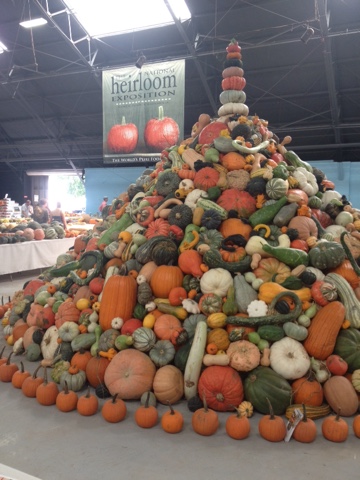 The pursuit for economical solutions to organic food is turning to capitalism and entrepreneurship in a big way. The same system that created the dreaded Genetically Modified Organisms (GMO’s) is now part of the solution. I am not saying this in a negative way; I am saying the “Organic” or “Heirloom” Industry as I call it, is learning how to be successful in America. You don’t like the way things are being done, fine. But don’t make a sign and stand on the street demanding a company change their way because you don’t approve. I have no time for those who seek change by forcing change to others (especially through meaningless protests or worse legislation) instead of changing themselves. Especially when you are not forced to buy GMO products to begin with. If you don’t approve of the product(s), you have two options as I see it.
The pursuit for economical solutions to organic food is turning to capitalism and entrepreneurship in a big way. The same system that created the dreaded Genetically Modified Organisms (GMO’s) is now part of the solution. I am not saying this in a negative way; I am saying the “Organic” or “Heirloom” Industry as I call it, is learning how to be successful in America. You don’t like the way things are being done, fine. But don’t make a sign and stand on the street demanding a company change their way because you don’t approve. I have no time for those who seek change by forcing change to others (especially through meaningless protests or worse legislation) instead of changing themselves. Especially when you are not forced to buy GMO products to begin with. If you don’t approve of the product(s), you have two options as I see it.
1. Stop buying them and find replacements you approve of and purchase those, or
2. Make your own.
What this expo did, and did very well, was offer replacement products for consumer. It also helped educate, encourage and empower business and consumers to make, grow and harvest food organically.
Before we go any further, we wouldn't be doing our job if we didn't provide links to pro-gmo articles, published research and major manufactures. So at the risk of turning away the anti-gmo readers, here are a few links.
- Arizona's own Julie Murphree of the Arizona Farm Bureau writes about her trip to Monsanto.
- Inquiring Minds Podcast with Monsanto Scientist Fred Perlak.
- And of course Monsanto's website. I think they get the brunt of the attention because their Round-Up weed killer is a house hold name. Other GMO product manufactures include Syngenta, DuPont, BASF & Bayer.
Ok. Back to the expo! Successful business also offers a level of convenience to the consumer. I was very pleased by the convenience of having a host of like minded speakers and vendors, all in one great venue at the Sonoma County Fairgrounds in Santa Rosa, California. This is exactly what the Heirloom Industry needed to do in order to bring their message to consumers. Now, their challenge is going to be pricing, which has two aspects; Short Term and Long Term costs.
• Short Term: What will it cost me right now? Or how much can I save on my food budget with generic, processed foods?
• Long Term: What will it save me long term? Will buying more expensive heirloom/organic foods provide a healthier lifestyle thereby reducing medical health bills in the long term? And will this lead to a better quality of a healthy life, that cannot be measured in financial terms?
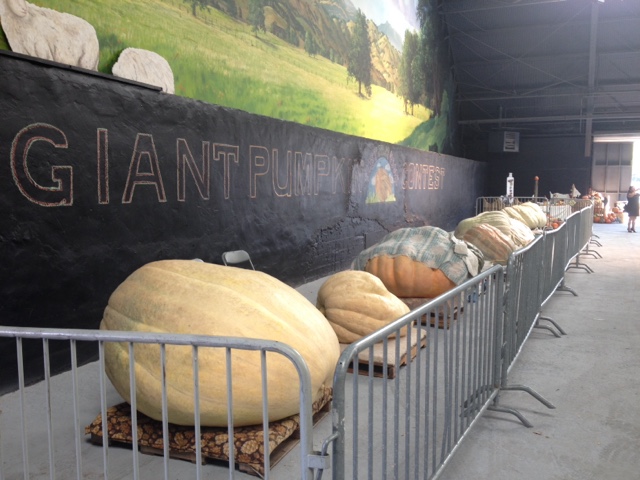 The Heirloom Industry is nothing new, in fact. It is very old and the overall goal of the industry is revitalizing age-old practices of food production into today's modern world with it's growing population and sprawling cities. This is where challenge number two for the Heirloom Industry comes into play: meeting the food demand of a growing population on reduced land available for agriculture. Modern farms boast of meeting growing consumer demands, on smaller acreage with less water, due to GMO technology. So, what is the right answer?
The Heirloom Industry is nothing new, in fact. It is very old and the overall goal of the industry is revitalizing age-old practices of food production into today's modern world with it's growing population and sprawling cities. This is where challenge number two for the Heirloom Industry comes into play: meeting the food demand of a growing population on reduced land available for agriculture. Modern farms boast of meeting growing consumer demands, on smaller acreage with less water, due to GMO technology. So, what is the right answer?
I believe that answer is different for everyone, and everyone needs to answer the question for themselves. My goal in this article is to share the resources I found helpful, interesting, unique or new at the expo while on my pursuit for the right answer, for me and my family.I have a feeling like many things in life, the answer is probably closer to the middle than it is one side of the pendulum.
One of the individuals I have learned a great deal from in improving our homestead is my aunt Cleta (one of Rosie's five sisters). She has been living a homesteading life for over thirty years and in addition to two daughters she has raised a countless number of livestock and produce. So it was no surprise to me when I arrived at registration, one of the first two ladies I met happens to know my Aunt Cleta. Ms. Lisa Cornett pictured below next to Leah Schreors are Baker Seed Company employees and volunteers for the expo. However, what I find most interesting in the picture is the large screen Apple computer. Could they have managed registration without a computer? Of course. But I'm sure it was awful convenient for them to not have file boxes full of per-registrations and the ability to process electronic payments instead of managing a cash box. There is one of those key words again for today's successful businesses, "convenience."
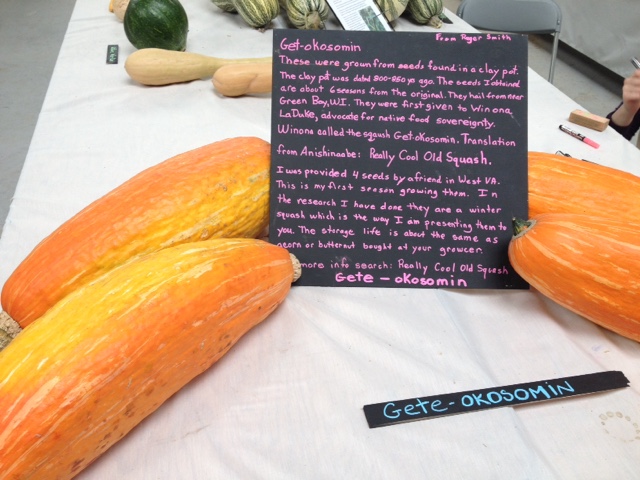 |
 |
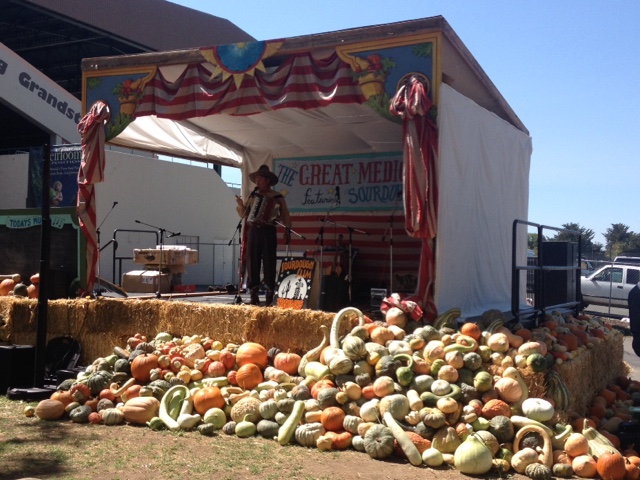 |
To help simplify the mass of material I gathered, I have broken it down into three categories, starting off with my favorite.
Gardening, Farming and Livestock Production

- Baker Creek Seed Company. The heirloom seed company that masterminded the expo. You can shop online or request on of their catalogs. - http://www.rareseeds.com
- Bee Thinking. Bee keeping boxes and gear for backyard bee keeping and honey making. - http://www.beethinking.com
- Bright Agrotech. Vertical gardening systems. Great way to grow herbs and veggies without requiring yard space. - https://www.brightagrotech.com
- Dripping Springs Ollas. Irrigation via Clay Pots. This easily makes it into the top 3 of my favorites from the expo. Simply bury these clay pots in your garden, fill them with water occasionally and the soils and roots do the rest by wicking the moisture they need through the pot...just remember to refill the pot every few days. This method adds convenience to the watering routine, saves water from over anxious gardeners and can potentially reduce insects by eliminating a top soil water source. I would have bought a dozen of them if I had room to bring them home.
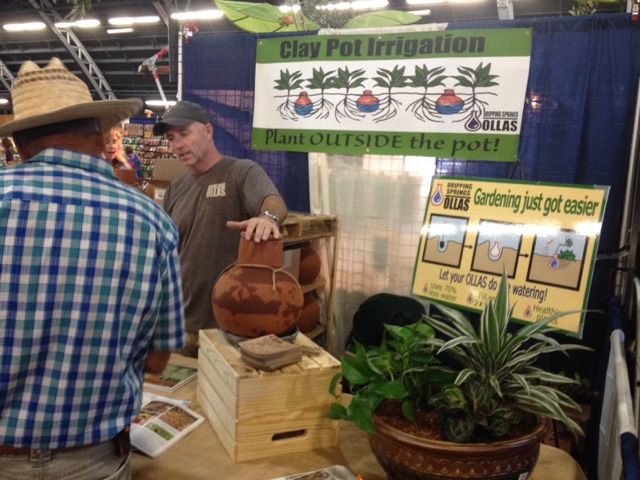 You can find local dealers on their website. - http://www.drippingspringsollas.com
You can find local dealers on their website. - http://www.drippingspringsollas.com - Freedom Farm. According to Freedom Farms they sell the "worlds fastest growing tree,"( the Royal Empress or Paulownia Elongata for the arborists that may be reading this). Jay Harper says they are too frost sensitive, even for our mild winters. I purchased one of the starters they were selling for $25 and planted at our home so we will see...(903)243-0918
- Gourmet Seed. Flower, herb & vegetable seeds from around the world. When I make a sandwich or a salad, I always put a mound of fresh sprouts on top if we have any ready in our window sprouting tower. I hear they are healthy, but that is not my motivation. I simply can't get enough fresh sprouts! To me they add so much more flavor and character than lettuce or spinach alone. Needless to say, when I stopped by this booth there was a cash, product exchange. I picked up their Sprouts for Health Book for $8, the Sprouting Jar for $15 and ordered the Terra Cotta Sprouter to be shipped home to replace our plastic sprouting tower. - http://www.gourmetseed.com
- Mass Wiggle. Fertilizer & soil amendments made from worm "bio" waste AKA worm poop. I know that doesn't sound exciting but to talk to them, it's better than sliced bread. What I really liked was how they utilized an abandoned dairy lot for their worm growing. Call me nostalgic, but it breaks my heart every time I see American farms shut down. - http://www.masswiggle.com
- Modesto Milling. - Organic livestock feed because you are what you eat! - http://www.modestomilling.com/
- Mushroom-Adventures. Mushroom growing boxes. I particularly thought this was interesting because I love to cook with mushrooms but never seem to have them when I have the time to cook. Adding a growing box would be like having lettuce in my fall garden, available and fresh off the plant when I'm ready to whip something up in the kitchen. - http://www.mushroomadventures.com
- Rain Reserve. Rain water harvesting is one of those items on my long"one day" list. Part of the reason is it's bulk and expensive up front cost. However, if you already have gutters (which I don't along with 90% of Arizona homes) this is a great retrofit application worth looking into. - http://www.rainreserve.com
- Sea Agri. Fertilizer & soil amendments from matter gathered from the ocean. The application listing for their SEA-90 products has everything from lawns, compost and potting soil to livestock supplement. We will be testing this product on our modest homestead. If I can combine all the different fertilizers we use into one, well slap my mama talk about convenience. http://www.seaagri.com
- Sonoma Aquaponics. Aquaponics, another item on my "one day" list. Homegrown fish & vegetables in a very compact unit, with claims of up to 90% water reduction. - http://www.sonomaaquaponics.net
- Synergy Ag Pro. Fertilizer & Soil Amendments - http://www.synergyagpro.com
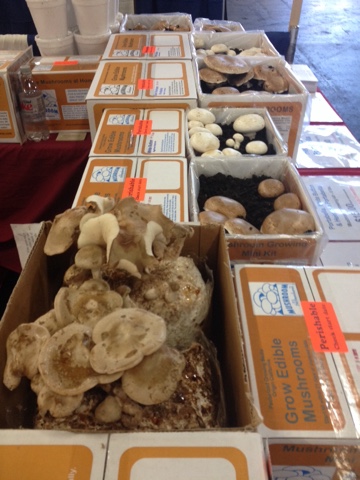
Livestock
Most of the livestock was chickens as I expected. But they also had turkey's, sheep and pigs. I probably would have spent more time in livestock yard but we took the kids to the Madera Fair 4-H livestock show earlier that week, so there wasn't a whole lot I hadn't just seen. The Kunekune Pigs were my favorite. Amanda raised Jersey pigs in her 4-H days and we consume a lot of pig products, but it's one animal we have yet to add to our homestead. What intrigued me about the Kunekune breed is their pug nose that keeps them from being borers; which means less fencing needed for the pins. The problem then in the desert, is keeping them cool. That would require lots of shade and air conditioned space via misting or evaporative cooling.
- Leland Street Farms Kunekune pigs by Nancy Prebilich. info@lelandstreetfarms.com Like many small farms in America, they have been through hard times. You can learn more about their story at www.onherownfilm.com.

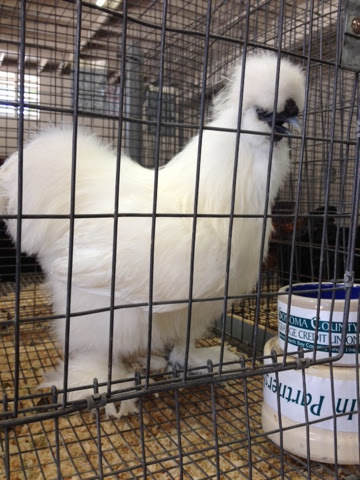


Organic Products, Retailers & Foods
- Dr Bronner. Yes, that stuff grandma used to use. Hemp based soap & hygiene products. - https://www.drbronner.com

- Fermentn. Fermenting lids for wide-mouth mason jars. Allows the build-up gas to escape without allowing air in. It also comes with a hand made ceramic weight to keep all your ingredients below the water level in the jar. I purchased one at the expo and ordered a few more when I returned home for my okra! - http://www.fermentn.com
- Hollow Leg. A harvest sack for your garden and orchard. It fits onto your belt loop and is made of sturdy canvas. - http://www.thegardenershollowleg.com
- Homestead Store. Supplies, tools, books and more for your personal homestead development. - http://www.homestead-store.com
- Manitoba Harvest. Organic hemp based food products that can be found in many grocery stores across the country or order online. - http://www.manitobaharvest.com
- Not Yer Mommas. Homemade granola...but not yer mommas! Organic & handmade by three friends in Sonoma County. Growing up I do remember mom making granola from time to time so I had a sample to see and it was not my mommas, and I'll just leave it at that. - http://www.notyermommas.com
- Touch Stone Essentials. Organic health supplements & oils. - http://www.touchstoneessentials.com
- Wildflower Seed & Tool Company. Wildflower seeds and unique pruners that hold the limb after being trimmed. Especially helpful for fruit harvesting to prevent bruising from fruit dropping to the ground. - http://www.www.wildflower-seed.com
- Wild West Ferments. Organic Sauerkraut and other fermented foods. I had a sample at the expo and purchased a jar because it was SOOOO good and I love me a warm Ruben with a mound of fresh kraut! ...unfortunately I left it in our friends refrigerator in California, doh! www.wildwestferments.com
- Young Living. Natural oils. We use a number of these regularly, especially the lavender at bed time for the babies. - https://www.youngliving.com
Resources, Organizations & Movements
- Animal Welfare. Promoting pasture raised livestock. - http://www.animalwelfareapproved.org
- Chelsea Green Publishing. Great resource for how-to books for homesteading. Cheese making, horse-drawn farming, building greenhouse...you name it, they probably publish a book on it. - http://www.chelseagreen.com
- Community Gardening. If you live in an apartment or don't have time during the week to properly maintain a garden, but still want to get your hands dirty on the weekend, find or start a community garden. http://www.communitygarden.org
- http://www.compassgreenproject.org/
- Gardening by the Moon - Seed planting guide following lunar phases. Oceans and animals follow lunar phases, I guess to think about it, it doesn't sound so strange plants are affecting by it as well. - http://www.gardeningbythemoon.com.
I spoke with Jay Harper about it; you can hear the conversation on the following audio link from our September 12th broadcast at 9:45 minute mark.8:00AM Hour - Segment 1 (running time 13:03)
- GMO Free USA. Food Transparency. Food Justice. - http://www.gmofreeusa.org
- Moms Across America. Empowered Moms, Healthy Kids - http://www.momsacrossamerica.com
- Organic Seed Growers & Trade Association. Dedicated to developing, protecting, and promoting organic seed and organic seed growers. - http://www.osgata.org
- Slow Food USA. The great American slow food revolution. I really like this concept because it's similar to what my grandmother Baby Kay always said, "making a meal is like making love; you have to take your time or not everyone will enjoy it." The local Russian River Chapter at the expo has a community apple press that operates during harvest. I checked their website and they have 4 Arizona chapters! - http://www.slowfoodusa.org

- Sustainable Poultry Network. Connecting hertiage chicken breeders with consumers. - http://www.spnusa.com. The founder Jim Adkins was one of the guest speakers at the expo and shared some fascinating statics about modern poultry production.
- In 1950, 1.6 million farms produced 581 million broiler chickens. In 2007, 27,000 farms produced 8.9 billion broilers.
- During that time, the harvesting of the broilers had dropped from 4 month to 37 days.
- Jim's main point was 'you are what, what you eat, and encouraged consumption of heritage poultry raised according totheir standards and guidelines.
- Sustainable Santa. I had the pleasure of meeting Sustainable Santa on Wednesday Morning at the media meet and greet. He was jolly, but not fat as we have come to expect from Santas. According to Sustainable Santa, the fat image only applies in America and was created as marketing campaign in the 1930's to sell more sweets. Here are his 3 rules to end child obesity by promoting healthy eating. - https://www.facebook.com/sustainablesanta
- If you are hungry, eat an apple. If you are not hungry enough to eat an apple, you're not that hungry.
- Treat Treats as Treats. Save treats for special occasions.
- Follow the "S" Rule. No snackes, seconds, added sugar or salts, sodas or sweets...Except on days that start with an "S."
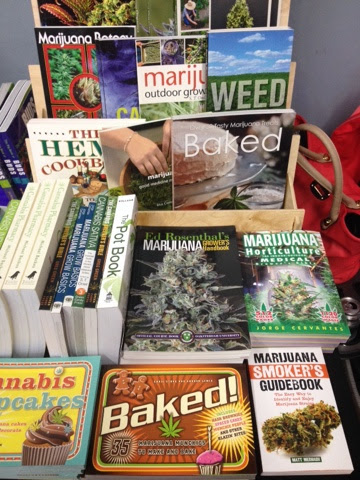
We had the pleasure of having Sustainable Santa join us live by phone on our September 26th broadcast, you can hear the interview on the following link starting at the 2:15 mark.
Segment 4 (running time 7:53)
Follow and support Sustainable Santa on his 2015 Farmer's Market Tour promoting his healthy, happy Santa message to America! http://www.responsiblefoods.org/sustainable_santa_hits_the_road.
Food Vendors at the Expo
I did enjoy three meals at the Heirloom Expo, including one complimentary media breakfast with fresh squeezed tangerine juice and a variety of pastries and fresh fruit. The two lunches I purchased were very good but this goes back to being price competitive. Naturally, at any paid to attend event (expos, fairs, ball games, etc), the food inside is more expensive. Because it was organic (of course) and because it's California (near the bay area) I expected it to be a little more expensive. But $13 for a burger, plus $1 for cheese and $2 for avocado, seriously? That didn't include the two $3 ice teas I drank to wash it down. I appreciate quality as much as the next man, however, that same week at Basha's, ground beef was $2.88 per pound and driving home I passed an avocado stand near Gilroy, Ca. with a sign 8 (whole) avocados for $1. It was a great burger but for the $16 bucks I spent, I could have made my whole family burgers for that same amount. The other lunch was a delicious buttermilk fried chicken sandwich with black-eyed peas for $14, plus $3 for a watermelon-lemonade. Whew! I couldn't sustain that cost of life style for long. In sharing this story with a few folks, no one was nearly as surprised as I was, on the cost; maybe I'm out of touch with the cost of eating out organically. Here we go full circle again on cost vs. value...and value can be a very hard sell against convenience especially when someone is hungry and may only have $10 on hand.
 |
However, more surprising to me than the cost of meals was the lack of recycled products and recycling bins along the food court. Notice in the picture above both drinks and utensils are plastic. You would think with an organic focused crowd, a zero waste event would have been a significant selling point. It's possible I may have missed recycling bins, but I think it was an oversight and one area they could potentially look into for next year.
Conclusion
By the end of my time at the expo I found myself laughing because I felt like one of our radio listeners at this expo, getting a lectured from me, about ‘getting what you pay for.’ A high quality remodeling job is an expensive, slow process but done right can be timeless. Shouldn't the same principles apply to our food?
###
Print this page
recent post
- Duck, Duck, Duct! How Often Should Ductwork Be Cleaned?
- Vinyl vs. Fiberglass Windows: Which Is The Better Choice Of Replacement Window?
- We May Be The Grand Canyon State, But The Rocky Mountains Are Important For Arizona
- Welcome to Arizona! Things A Newbie to Arizona Should Know
- The Pros & Cons of Buying A Flipped House
- Getting In On The Ground Floor
- Why It’s More Critical Than Ever To Get Your AC Serviced Before Summer
- The Reality of Remodeling
- What To Look For When Comparing Your Roofing Quotes
- What To Expect When Buying New Windows & Doors
